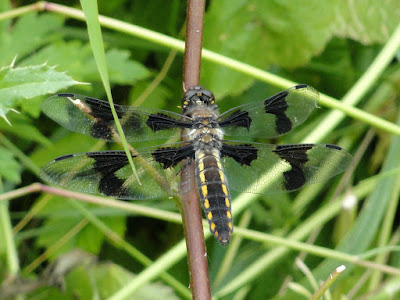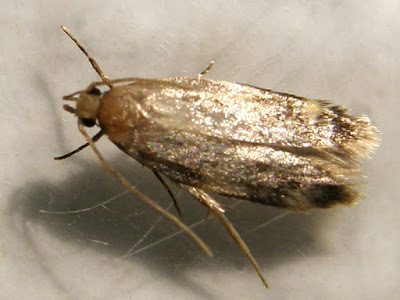We were sitting quietly in the evening after another strenuous day in the garden, half dozing, half watching a slide show of our recent photos. "We have a good life," I said. "So much beauty, so much to do, so many new things to learn ..." So many questions to find answers to, I could have added.
Here are a couple of those questions.
On White Rock beach last Tuesday, the tide was low and going out, there was no wind and the water was smooth, the wavelets retreating down the sand gently, barely stirring the sea lettuce as it went. We walked west, towards Kwomais Point, staying mostly on the drying sand.
Something else had been going the same way.
 |
| What made these? |
Small footprints went straight along the beach, a purposeful walk, with no meandering and only a couple of stops to dig at something in the sand. They went on and on, directly west, crossing several of the streams emptying onto the beach, a long walk out in the open for most woodland creatures.
 |
| Four toes with sharp claws, and a rounded heel. |
 |
| About an inch and a half long. |
This was not a dog; it traveled in a straight line, it kept a steady pace, and its gait was unusual; four steps in a group, one in front of the next, then a long space, then four more. And although sometimes human footprints went alongside (as mine would, too), they varied; barefoot, or shod with an assortment of sole prints. Mostly, the tracks went on alone.
After a time, I met tracks coming back towards me, then the end of the line; the animal did a U-turn, for no perceptible reason, and headed back in the same manner, four steps, jump, four, jump ...
 |
| Going and coming, with the U at the end. Barefoot human alongside here. |
So what was it? I've spent the evening looking at animal tracks, comparing the shapes, the number of toes, the claws, and the gait. First, the most common around here; raccoon, skunk, fox, coyote. It's none of those. It's not a domestic cat; they sheathe their claws.
The animal whose tracks are most like this is a
mink. They have five toes, but the fifth often does not show up on their tracks. And they bound, rather than walk, making a pattern of four steps and a pause. So do other
mustelids, like otters (but they're bigger). So do skunks. (Remember
Pepe le Pew; bounce, bounce, bounce!)
But. Minks are nocturnal. What would one be doing walking brazenly down a public beach in broad daylight? And they usually hunt in fresh water. (But
here's a photo of mink tracks on a Vancouver Island beach.)
So I am left with the question unanswered. I am inclined to go with mink, but it's not quite a match. What do you think?
Question # 2: We passed 7 dying Lion nudibranches,
Melibe leonina. I had never seen any so big before; most I've found have been under 2 inches long, even with the hood extended. These were all around 4 inches long.
 |
| The tentacles on the left are along the rim of the feeding hood. The paddle-like shapes are cerata; defense and decoy organs; they also help with respiration. |
 |
| Another one, with foot for a measuring stick. 4 inches. |
What made these wash up on the beach and die?
At least this question was easily answered.
Melibe lives for one year. In the spring, she* mates, lays her eggs on kelp and eelgrass, then dies. These would have finished their egg-laying, and are moving aside for the next generation.
*Most sea slugs,
Melibe included, are hermaphrodites; each animal has both male and female organs. And they all lay eggs. "She" just works better for them.
There's a beautiful photo of
Melibes mating,
here, on the
Sea Slug Forum. This was in February, but I've found records of egg-laying in this area from March to July (
photos).




















































